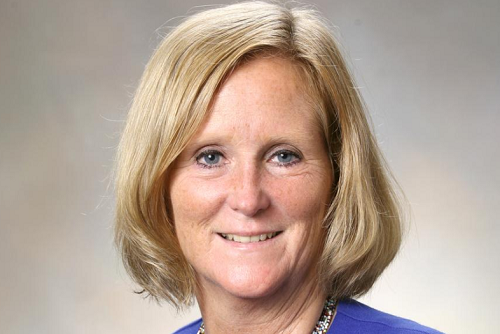Investors also must be patient

By Deborah Cunningham, Chief Investment Officer, Global Liquidity Markets, Federated Investors.
As the saying goes, “If there is a gap, something will fill it.” So it is that the lack of market-moving economic data lately has led to a ridiculous level of scrutinizing Fed speak. Even before the investors and analysts brought out their magnifying glasses to scan the Federal Open Market Committee (FOMC) statement released today with no action on rates, people have been over-thinking things.
There is no question Chair Jerome Powell had much to explain after the last two FOMC meetings, when the Fed all but did a U-turn. Policymakers who last fall were projecting multiple rate hikes in 2019 started forecasting one or none only a few months later. But with the indication—confirmed again in the statement today—that they will pause until the economy shows signs of strengthening or weakening, there isn’t much to uncover. But the markets are searching anyway, and little actions get turned into big reactions if a Fed official says something slightly different from the party line.
Investors are, of course, just looking for guidance. The path of rates was somewhat predictable both in the extended period of near-zero rates and the recent time of gradually rising rates. Many see today’s “patient” Fed as perplexed, and that can spook investors. They didn’t get any new direction today, as the Fed kept the target range at 2.25-2.5% and used that “patient” word again. The only item of note was that the Fed addressed the recent development in which the fed funds effective rate has continued to move higher to the point of being above the interest it pays on excess reserves (IOER). In order to enhance its ability to control the fed funds rate, the Fed lowered the interest it pays on IOER by 5 basis points to 2.35%. This action has no broader monetary policy implications.
The consternation by investors is a major reason the liquidity segments of the Treasury and London interbank offered rate (Libor) yield curves have flattened. Recent Fed speeches have tried to get the Treasury curve back to a normalized (i.e., steeper) state, but 6-month Treasuries still are in the 2.40% range and a flattened Libor is barely budging.
What is interesting is that despite the flattening, flows have been strong into prime funds across the industry. That is a remarkable comeback since the reforms caused most investors to flee to government money funds. We have received substantial inflows into our prime products. What is interesting—and validating for cash managers—is that the influx doesn’t seem to be coming from government money market funds, but rather from bank deposit clients in the marketplace.
The municipal money fund market had a remarkable April. Until the first week or so of the month, investors were pouring money into muni bond funds to lower their tax obligations. But with so many inflows, and lighter supply than is typical (also due to restrictions in the new tax code), these funds were temporarily forced to buy money-market variable rate demand notes (VRDN) as placeholders. This keep the 7-day Sifma rate (the index that tracks muni VRDN yields) artificially low. But in mid-April, a return of supply on the muni bond side because of concentrated settlements hit at the same time that muni money markets faced the seasonal tax-related redemptions—now larger to cover, yes, many investors’ greater tax liabilities. It was an epic snapback. All in all, Sifma climbed around 80 basis points over the month. The laws of supply and demand say Sifma will decrease at some time, and cash managers would be smart so take advantage of it now.
With all this in mind, we have set the weighted average maturity (WAM) target of our prime and muni funds at 40-50 days and government funds at 30-40 days. We are in the middle of those ranges, keeping some powder dry for when there is better value out the curve.
Found this useful?
Take a complimentary trial of the FOW Marketing Intelligence Platform – the comprehensive source of news and analysis across the buy- and sell- side.
Gain access to:
- A single source of in-depth news, insight and analysis across Asset Management, Securities Finance, Custody, Fund Services and Derivatives
- Our interactive database, optimized to enable you to summarise data and build graphs outlining market activity
- Exclusive whitepapers, supplements and industry analysis curated and published by Futures & Options World
- Breaking news, daily and weekly alerts on the markets most relevant to you



